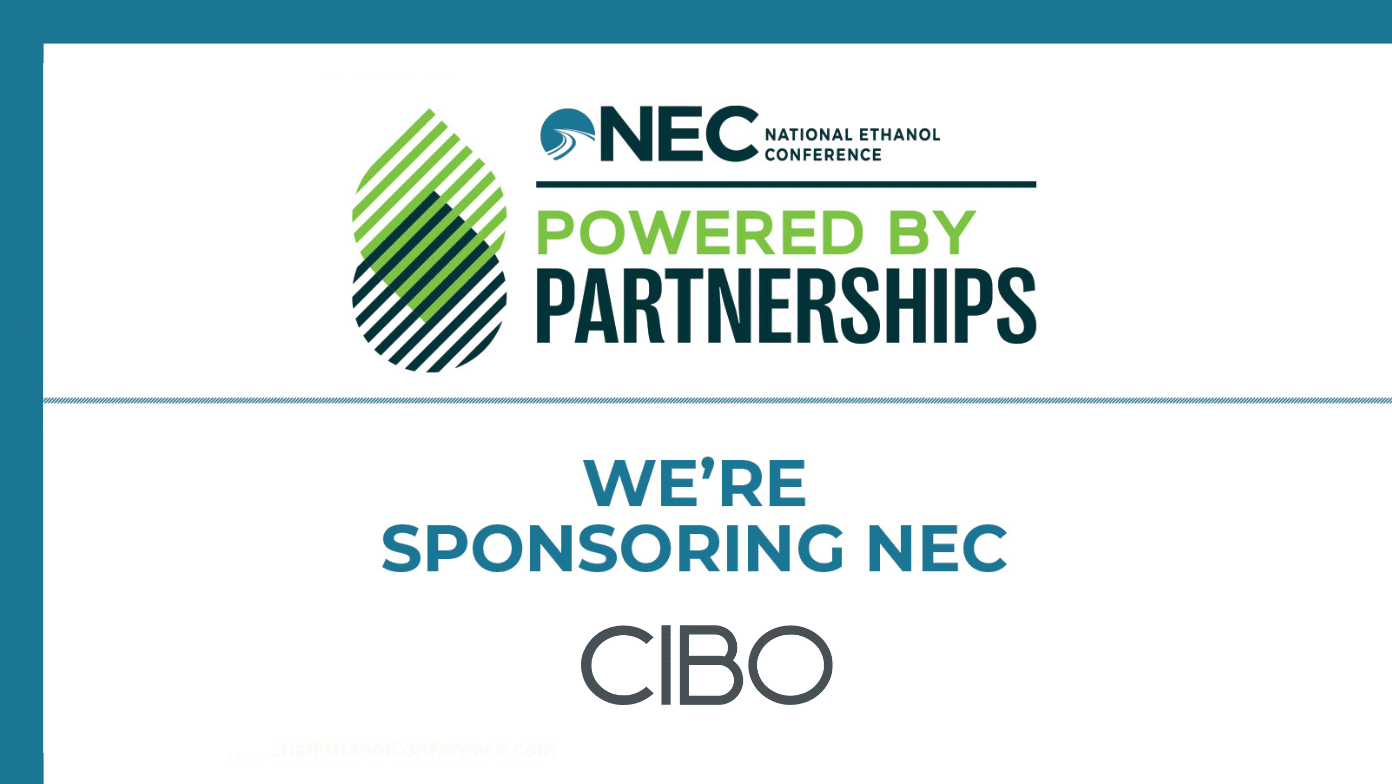Blog
Future Proofing Ethanol and SAF CI Scoring with CIBO
February 27, 2024

Get the latest from CIBO. Stay connected with news, expert insights and exclusive event invitations.
SubscribeCIBO was a Sponsor at the National Ethanol Conference in San Diego Feb 19-21. There is already a lot of interest in lowering the Carbon Intensity (CI) of ethanol and growing interest in how to lower the CI of all biofuels across the supply chain. This interest is being driven by new incentives from the government - IRA section 45Z tax credits for one - as well as awareness of the climate action necessity.
For many renewable fuel products and biofuels, the supply chain starts on the farm field. Currently, the 40B (and soon 45Z) tax credits apply to Sustainable Aviation Fuel. The credits are expected to also apply to the production of ethanol when 40B sunsets next year and 45Z takes over. For both ethanol and ethanol-to-jet fuel production pathways, it is the farming of feedstock (aka corn, soy, etc), that has one of the greatest GHG emissions.
 Image 1: GHG Emissions by source in the corn-to-ethanol production pathway.
Image 1: GHG Emissions by source in the corn-to-ethanol production pathway.
Source: https://iopscience.iop.org/article/10.1088/1748-9326/abde08

Image 2: GHG Emissions by source in the ethanol-to-jet fuel pathway.
There is still some “wait and see” feeling and not a little bit of frustration that pervades the biofuels space when it comes to initiating programs that incentivize low CI feedstock. The uncertainty and frustration come from a lack of clarity and specificity from the government on what, exactly, will “count” from a tax credit standpoint. Contributing to this uncertainty is the fact that it is still the early days for byproducts and markets for low CI feedstocks. Everyone seems to agree that we are on the right pathway towards a renewable fuels future but all agree that more clarity and better understood markets are needed to get there faster.
The GREET model allows on-farm practices to be considered in the overall CI calculations for ethanol and SAF; but it does not require on-farm practices to be used. There are Lifecycle Analysis Databases that simply stipulate a CI score for the feedstock being used, regardless of where or how it’s being farmed. This approach, while possible faster than a detailed supply shed or farm-by-farm approach, leaves tax credit money on the table for biofuels producers and cuts farmers out of the incentive picture entirely.
In his speech at the NEC, US Secretary of Agriculture Tom Vilsack was clear on how he feels about that. Secretary Vilsack mentioned that on-farm modeling and usage of GREET is essential for incentive programs for farmers. He suggested that such incentive programs are essential to achieve our fuel security and agricultural resilience goals. The Secretary was clear that both GREET and other models used for CI quantification must accommodate on-farm sustainability and climate smart practices.
The Secretary talked about the importance of biofuels supported incentive programs for farmers because, he said, those incentives, combined with climate smart agriculture practices create additional revenue streams for small and medium sized farms. Incentive programs help create systems of sustainability that create additional revenue streams for farmers, coops, and communities that establish our resiliency. Such incentive programs that help the transition to regenerative agriculture is how farmers and coops and biofuels producers embrace our "renewable energy future".
The secretary closed by lauding farmers and reinforcing his support for regenerative agriculture saying that “...farmers understand intuitively that you have to give back to the land, you can't keep taking, otherwise it will stop giving. You have to replenish and renew and regenerate it.”
CIBO is proud to be at the forefront of the transition to regenerative agriculture. Our platform uniquely combines detailed programs management with satellite based remote sensing and detailed ecosystems modeling. Together, the remote sensing detects on-the-ground farming practices that reduce GHG emissions and lower CI scores. The detected practices are fed into our modeling engine which brings the most advanced mechanistic and ecosystem modeling available to bear on quantifying CI, CO2e sequestration, GHG emissions avoidance and reduction, as well as a host of other factors that contribute to overall carbon footprint impacts. All of this automatic detection happens without disrupting or interrupting the farmer who is focused on doing the business of farming. All of this data is then brought to bear on the programs and program requirements that are brought to life in CIBO Impact. Whether a refinery is trying to source low CI feedstocks or incentivize growers to adopt practices that will lower the CI of their future yields, CIBO Impact is there to bring to life any CI, Scope 3, USDA, or carbon farming program.
If we missed you at NEC, reach out! We would love the opportunity to show you how to see more with CIBO.